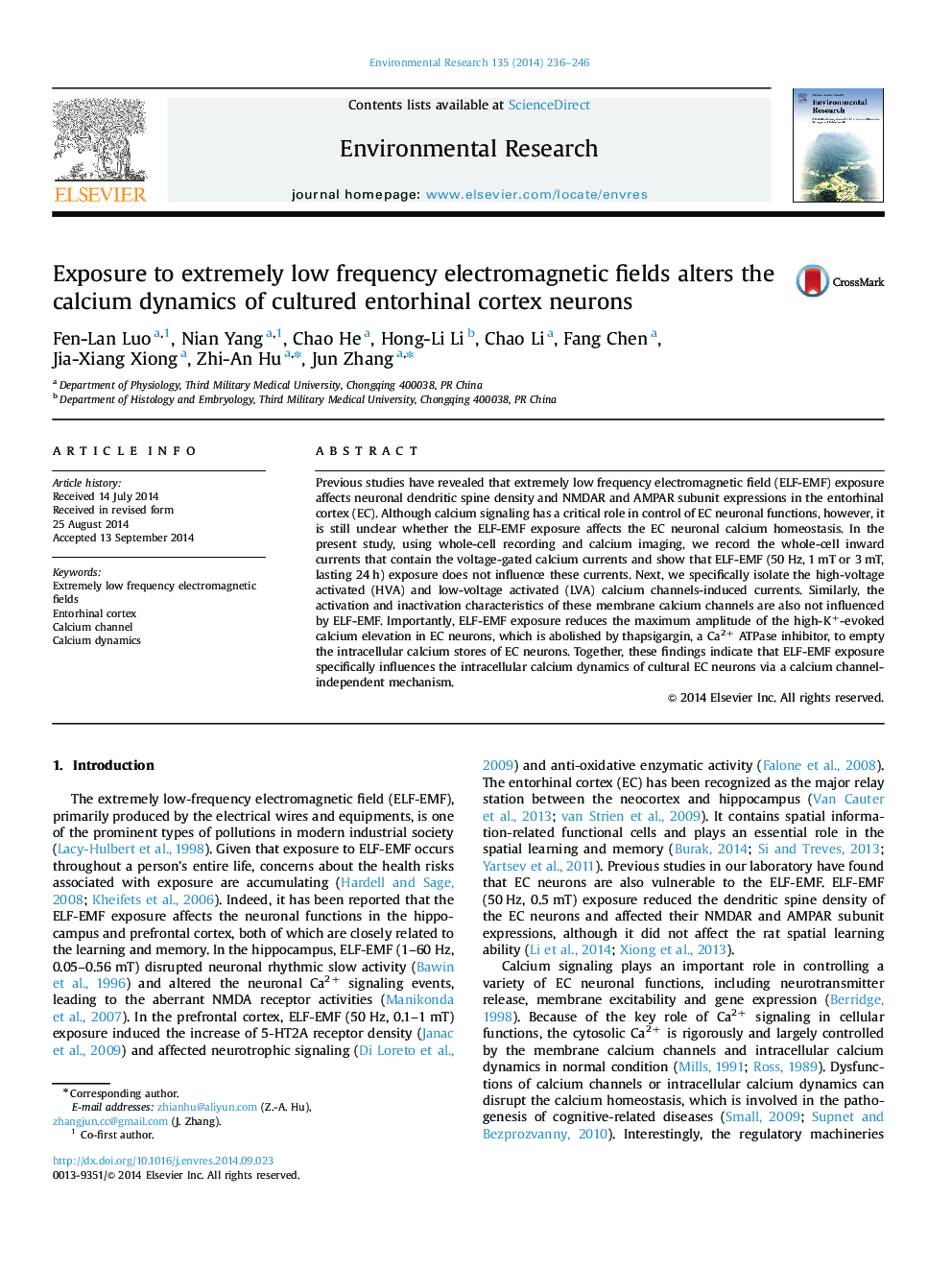| Article ID | Journal | Published Year | Pages | File Type |
|---|---|---|---|---|
| 6352886 | Environmental Research | 2014 | 11 Pages |
Abstract
Previous studies have revealed that extremely low frequency electromagnetic field (ELF-EMF) exposure affects neuronal dendritic spine density and NMDAR and AMPAR subunit expressions in the entorhinal cortex (EC). Although calcium signaling has a critical role in control of EC neuronal functions, however, it is still unclear whether the ELF-EMF exposure affects the EC neuronal calcium homeostasis. In the present study, using whole-cell recording and calcium imaging, we record the whole-cell inward currents that contain the voltage-gated calcium currents and show that ELF-EMF (50Â Hz, 1Â mT or 3Â mT, lasting 24Â h) exposure does not influence these currents. Next, we specifically isolate the high-voltage activated (HVA) and low-voltage activated (LVA) calcium channels-induced currents. Similarly, the activation and inactivation characteristics of these membrane calcium channels are also not influenced by ELF-EMF. Importantly, ELF-EMF exposure reduces the maximum amplitude of the high-K+-evoked calcium elevation in EC neurons, which is abolished by thapsigargin, a Ca2+ ATPase inhibitor, to empty the intracellular calcium stores of EC neurons. Together, these findings indicate that ELF-EMF exposure specifically influences the intracellular calcium dynamics of cultural EC neurons via a calcium channel-independent mechanism.
Keywords
Related Topics
Life Sciences
Environmental Science
Health, Toxicology and Mutagenesis
Authors
Fen-Lan Luo, Nian Yang, Chao He, Hong-Li Li, Chao Li, Fang Chen, Jia-Xiang Xiong, Zhi-An Hu, Jun Zhang,
